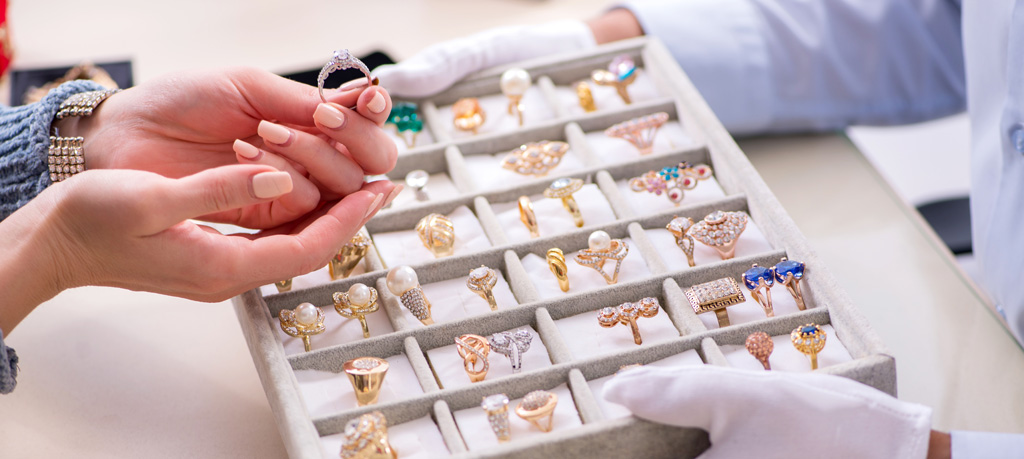Choosing the right planning tools for consistent retail brand execution
With the pandemic finally waning, consumers are flocking back to brick-and-mortar stores, at higher rates than analysts predicted. While eCommerce sales remain strong, it’s clear that customers crave the advantages of the in-store experience: the chance to see, feel and try on products, personal assistance from knowledgeable salespeople, and an aesthetically pleasing store environment. This is particularly true when it comes to specialty and luxury goods, including jewelry.
US jewelry specialists saw outstanding sales growth in 2021, and that trend continues. Coresight Research estimates that sales will increase by 1.5% year over year in 2022, reaching $41.9 billion. Yet the competition for dollars and loyalty remains fierce, particularly when it comes to brick-and-mortar sales. To stay out in front, jewelers need to deliver truly exceptional in-store experiences—and visual merchandising is a big part of that.
“Disruption” is the latest buzzword when it comes to visual merchandising, with retailers in the jewelry space and beyond reinventing their approach to the store experience. They realize that the key to delighting customers is creating an immersive experience that brings their brand to life—not only via the products on the shelves, but through less obvious touches like the audio and lighting, the temperature of the store, or a subtle signature fragrance. The most successful luxury retailers today are nimble too, implementing frequent floor moves and re-sets. Even small changes can elevate brand image and make a store visit feel more special. By changing the browsing path and keeping the store experience fresh and exciting, retailers can keep moving products and keep customers entertained and coming back for more.
Pulling this off, however, requires a lot of effort, planning, and decision-making: what changes to make, which products to highlight, and what new assets may be needed to support new visual merchandising, etc. Processes need to be tightly controlled, communication needs to be flawless, and store associates need to be kept up to speed.
Today’s ultra-tight labor market presents additional challenges. While consumers might be forgiving about staff shortages when it comes to supermarkets or fast-food restaurants, they’re not in situations where they are accustomed to personal attention. Many jewelry retailers are short-staffed right now, making it a strain for store associates to deliver the one-on-one experience customers expect—and that lead to sales. If associates can’t find what they’re looking for because changes haven’t been clearly communicated, their job becomes more difficult and. Meanwhile, some retailers are also making up staffing shortages with part-time or short-term employees, many of whom don’t have the experience or deep brand understanding it takes to successfully navigate frequent resets.
How can jewelry retailers overcome these and other obstacles and deliver above-and-beyond in-store experiences? It all comes down to having the right tools. Solutions like paper planograms and floorplans, PDFs, spreadsheets, and email are relics of an age when re-sets were infrequent and visual merchandising was less central to the jewelry store experience.
Modern, cloud-based digital platforms can give retailers the agility they need to be successful today, particularly in three key areas:
- Communication
Successful communication is mission-critical for visual merchandising and the implementation of on-brand experience—and the endless threads and chaos of email just won’t cut it. Ideally, you want a solution that keeps all communication in one central place where it’s unambiguously clear what the latest and most accurate information is. That solution should also allow real-time communication between stores and HQ for responding to questions, dealing with unexpected snags, or making changes on the fly. Ideally, it will all be accessible via mobile devices, so associates can use it right on the store floor if necessary. - Store-specific information
No two stores are exactly alike, whether you’re talking size, layout, fixtures, or location. The visual merchandising at a brand’s store in a Midwestern mall will no doubt look quite different from that in their store in an international airport. For planners and visual merchandisers to successfully bring their merchandising vision to life in each location, they need accurate, store-specific content—floorplans, floor-maps, fixtures, and more—that is easily accessible and preferably all maintained in a central location. - The big picture
Everyone needs to be on the same page when it comes to visual merchandising and brand experience. That’s why it’s so important to make sure that store teams not only understand what’s happening shelf-by-shelf at any given time, but that they also understand the broader context. When staff can view schedules, timelines, brand updates and additional information about campaigns and promotions, they’re more empowered and more invested in making your intended brand experience succeed.
There’s no question that a digital merchandising platform can help you deliver an exceptional in-store experience. The key, of course, is choosing a tool that’s robust enough to deliver, yet simple and intuitive to use.
Lisa Gulbin is a global luxury & lifestyle goods executive with expertise in visual merchandising, new store development, in-store brand experience, and product presentation. She has worked with many well-known brands such as Ralph Lauren and J.Crew and most recently served as Director of Global Visual Merchandising at Tiffany & Co.

